I have asked through email about dining room rug alternatives, no rug under dining table alternative to rug under dining table: Rugs have long been a staple in dining room decor, adding warmth, texture, and visual interest under the table.
Our dining table was placed on hardwood flooring for many years until I decided to attempt repurposing my living room area rug under the table last year. I loved how it completed off my dining room and how comfortable it looked. Naturally, chairs can no longer be slid in and out; instead, you must pick them up to shift them, but this was not a huge concern.
Is it OK to not have a rug under dining table?
An area rug will surely protect a wood floor from spillage, but if you have ceramic tile, this is not an issue. If you have a wooden floor, place a rug under the table to prevent scratching. This can also be solved with felt pads under the table and chair legs, eliminating the need for a rug.
However, breaking away from tradition can lead to truly captivating and original dining spaces.
7 Alternative to Rug Under Dining Table – No Rug Under Dining Table
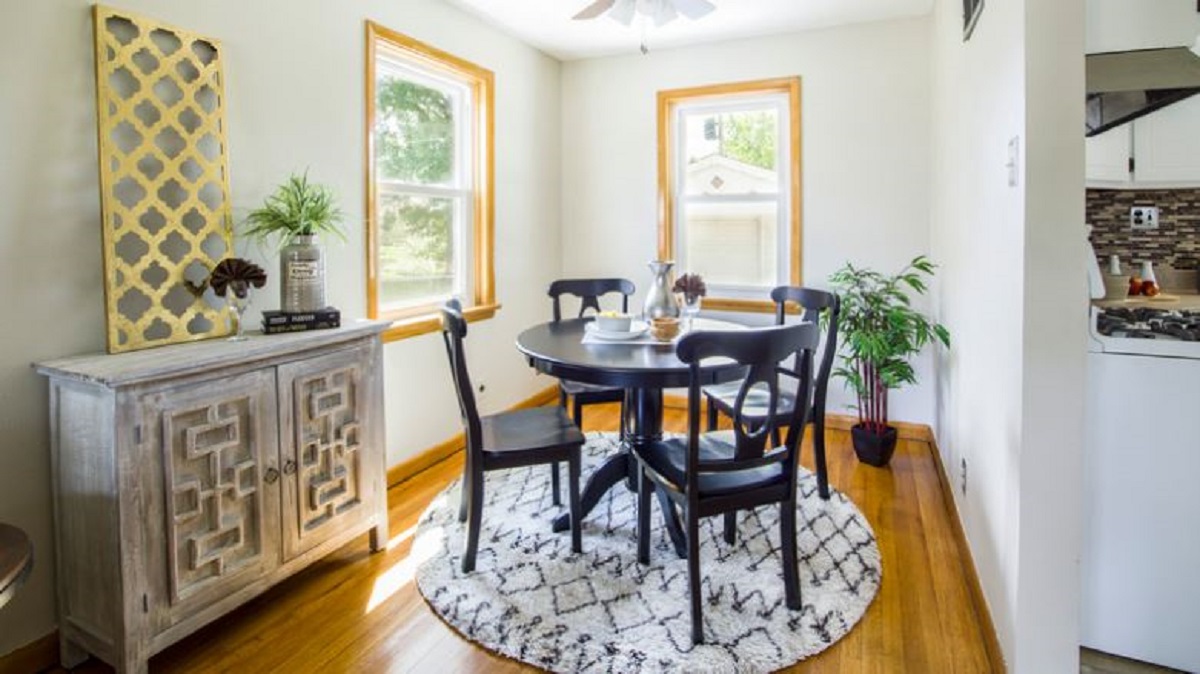
Here we will talk about it but first, lets see the highlights at a glance:
Highlights
- Vinyl Flooring: It’s durable, stylish, and easy to clean, vinyl flooring offers elegance with resilience, perfect for worry-free dining.
- Tile Insets: You can have a feel of Mediterranean flair with tiles that create an artful transition, adding charm and easy maintenance.
- Layered Natural Fiber Mats: Using seagrass, sisal, or jute mats, it will give your dining space an organic feel while achieving sustainability and texture.
- Statement Furniture: By leaving the floor bare, letting the centerpiece take center stage, and creating a minimalist style, it will let your dining table shine.
- Patterned Stencils: Stenciled designs on the floor allow you to express your creativity and add a distinctive, personal touch to your art.
- Plush Flooring: Luxurious carpet or velvet-like flooring improves the experience of dining.
- Chalkboard or Cork: With cork or chalkboard flooring, you can turn your dining area into a creative hotspot that combines entertaining.
If you’re looking to change your dining room design, consider these 7 rug alternatives that offer both functionality and a distinct charm.
1. Vinyl Flooring
Vinyl flooring is making a stylish comeback, and its durability makes it an ideal alternative to rug under dining table.
According to Home Inspection Insider, a single vinyl board can bear 500 pounds. Because most furniture cannot fit under a single panel, bulky furniture and refrigerators can be safely installed on vinyl plank flooring.
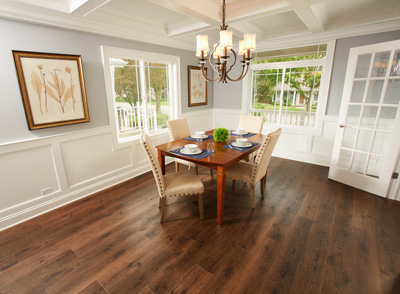
Available in a plethora of designs, including wood and tile patterns, vinyl flooring brings elegance and easy maintenance to the dining room.
Spills are a breeze to clean, and the resilient surface holds up well against heavy foot traffic.
Say goodbye to worries about wine stains and embrace the beauty of vinyl underfoot.
2. Tile
For a touch of Mediterranean-inspired opulence, consider using tiles as a dining area inset.
According to Teresa Vega, marketing manager at Porcelanosa, ‘porcelain tiles have less than 0.1% water absorption thanks to the source clay and additives. For flooring and for exterior uses this is critical.’
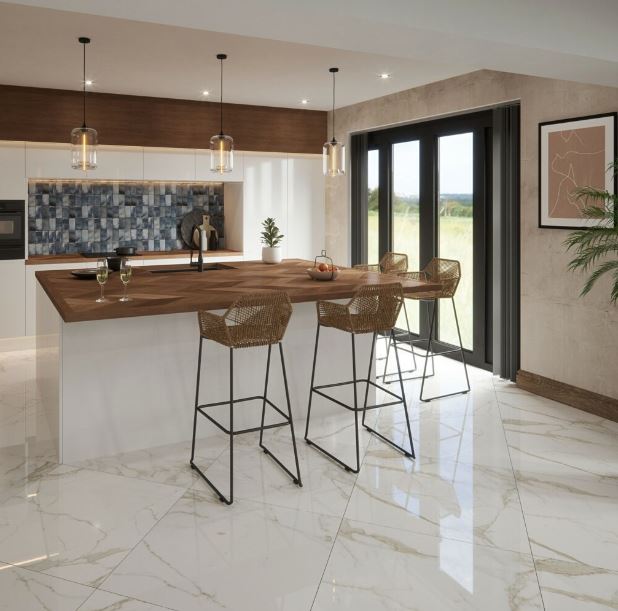
Whether you opt for colorful mosaic patterns or classic monochromatic designs, tiles create an artful transition between the dining area and the rest of the room.
This alternative adds a touch of grandeur and cultural charm while providing a practical, easy-to-clean surface.
3. Layered Natural Fiber Mats
Layering natural fiber mats such as jute, sisal, or seagrass can infuse your dining space with an earthy, organic vibe. As said on providenthomedesign, “They are relatively inexpensive. Natural Fiber rugs are generally less expensive than other rugs. As I mentioned above I found my 8×10 jute rug for only $113!”
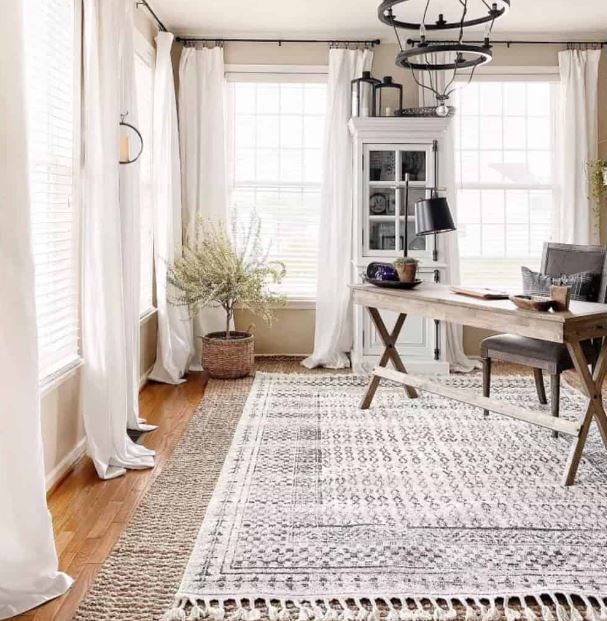
These materials are not only visually appealing but also durable and sustainable.
Mixing and matching different textures and sizes can create a cozy and inviting atmosphere, all while being kind to the environment.
4. Statement Furniture
Why not let your dining table take center stage? Allow your statement dining table to stand out by leaving the floor bare underneath.
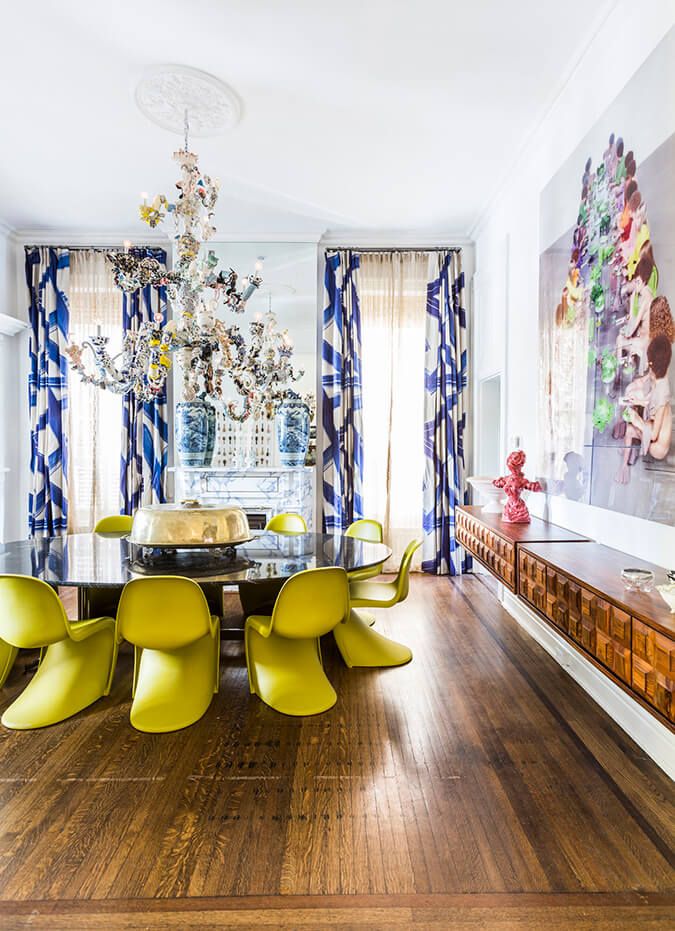
The absence of a rug draws attention to the centerpiece of the room, making it the star of the show.
This minimalist approach offers a clean and uncluttered look that can be especially effective in smaller spaces.
5. Patterned Stencils
Elevate your dining area with stenciled patterns directly onto the floor. This DIY approach allows you to customize the design to match your style and the room’s decor. As stated on Xometry, “Stencils are not only easy to use, but they are cost and time efficient. Stencils can be reused, and colors can be tweaked to a design by simply applying new colored paint to the stencil.”
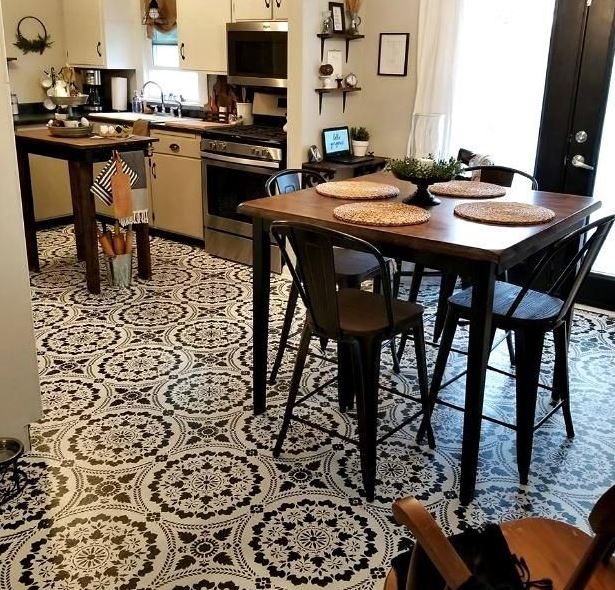
Whether it’s a sophisticated geometric motif or a whimsical floral pattern, stencils can add a touch of artistic flair that’s uniquely yours.
6. Plush Flooring
For a truly indulgent dining experience, consider installing plush carpet or velvet-like flooring. I have seen to say Floors USA about it “…if your dining room doesn’t get much use, the extra luxury of plush carpet or hardwood with a soft, comfortable rug may be attractive.”
This sumptuous choice not only adds a luxurious feel but also enhances acoustic comfort in the dining room.
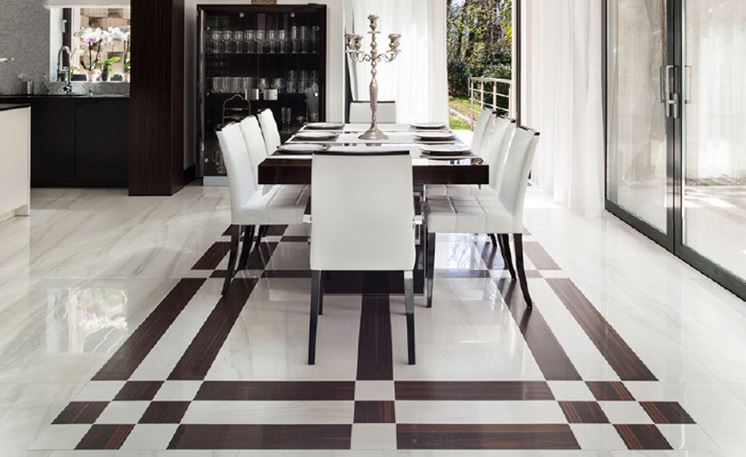
The softness underfoot can make gatherings around the table even more enjoyable, while the lush texture adds a touch of opulence to the space.
7. Chalkboard or Cork flooring
Turn your dining area into a creative hub with a chalkboard or cork flooring. Chalkboard flooring allows you to doodle, write messages, and change up the decor as often as you’d like. I asked about it on Quora, and I got the best answer from Chris Williams, “Cork flooring can withstand heavy foot traffic and is resistant to scratches and impacts. It’s also naturally resistant to mold, mildew, and pests, making it a good choice for allergy sufferers.“
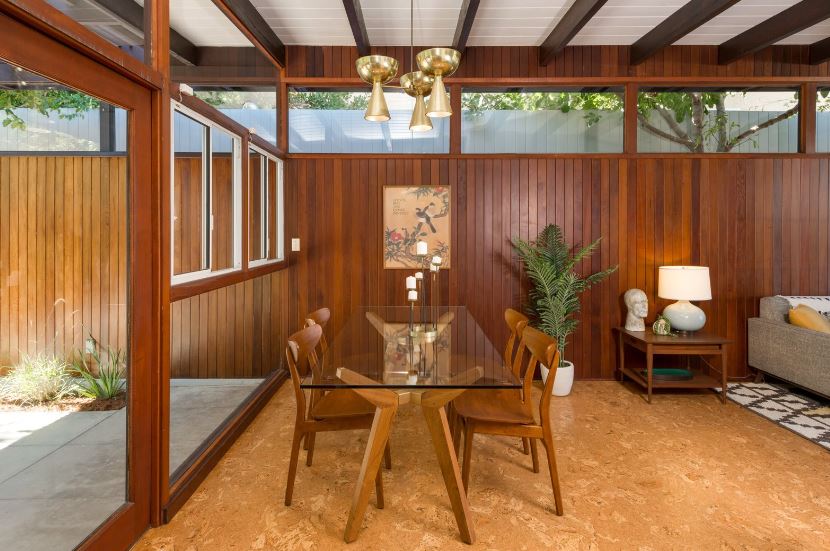
Alternatively, cork flooring provides a cushiony and eco-friendly surface that’s perfect for family dinners and social gatherings.
Do you need a rug pad under a dining room table? No one Asked!
There are some advantages of putting rug pad under dinning table. But, dining tables can be really heavy, and any rug under them is usually tightly fastened in place, so a rug pad may not be required in a dining room environment. Hallways are ideal settings for runner rugs. However, because hallways are such high activity areas, runner rugs may move.
Conclusion
Dining room decor is an opportunity to showcase your personality and design sensibilities. By exploring these seven unique alternatives to traditional dining room rugs, you can craft a space that speaks to your individuality and creativity.
From resilient vinyl to expressive stencils, these alternatives offer both style and practicality, giving your dining room a distinct and memorable character.
Embrace the unconventional and redefine the way you think about dining room design.
References
Hi there, I’m Philip Muchemi, a seasoned Interior Designer with a dynamic background in the industry. Over the last six years, I worked on the operational team of Turtleneck Designs Inc.’ before moving on to Delta Int-Design where I specialized in architectural designing, computer-aided design, space planning, sketching, organizing, and drawing.
Currently, I am the founder of Whatsmyrugsize.com and a Privilege Interior Designer at ArcEngg, which is the leading designing firm. My goal is to provide necessary information and helping hand to ArcEngg and Whatsmyrugsize customers all the way through, while educating them about these interior designing.